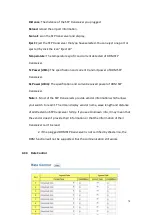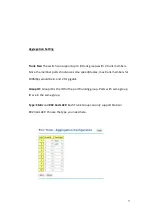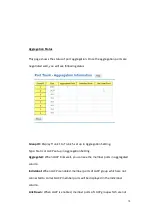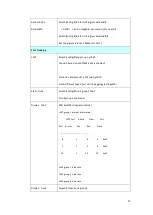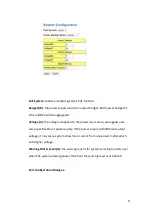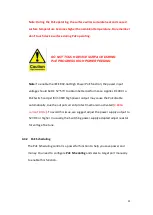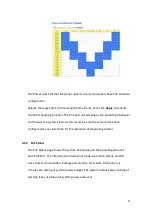
76
4.3.4
Port Trunking
Port Trunking configuration allows you to group multiple Ethernet ports in parallel
to increase link bandwidth. The aggregated ports can be viewed as one physical
port so that the bandwidth is higher than merely one single Ethernet port. The
member ports of the same trunk group can balance the loading and backup for
each other. Port Trunking feature is usually used when you need higher
bandwidth for backbone network. This is an inexpensive way for you to transfer
more data.
There are some different descriptions for the port trunking. Different
manufacturers may use different descriptions for their products, like Link
Aggregation Group (LAG), Link Aggregation Control Protocol, Ethernet Trunk,
Ether Channel…etc. Most of the implementations now conform to IEEE standard,
802.3ad.
The aggregated ports can interconnect to the other switch which also supports
Port Trunking. Westermo Supports 2 types of port trunking. One is Static Trunk,
the other is 802.3ad. When the other end uses 802.3ad LACP, you
should
assign
802.3ad LACP to the trunk. When the other end uses non-802.3ad, you can then
use Static Trunk.
There are 2 configuration pages, Aggregation Setting and Aggregation Status.
Summary of Contents for PMI-110-F2G
Page 1: ...1 PMI 110 F2G User s Manual Version 3 0 Industrial Managed PoE Switch ...
Page 5: ...1 5 2 Westermo Private MIB 234 5 3 Revision History 235 ...
Page 19: ...15 ...
Page 168: ...164 4 8 3 DSCP Queue Mapping 4 8 4 CLI Commands of the Traffic Prioritization ...
Page 193: ...189 ...
Page 234: ...230 Note No CLI command for this feature ...
Page 240: ...236 ...













